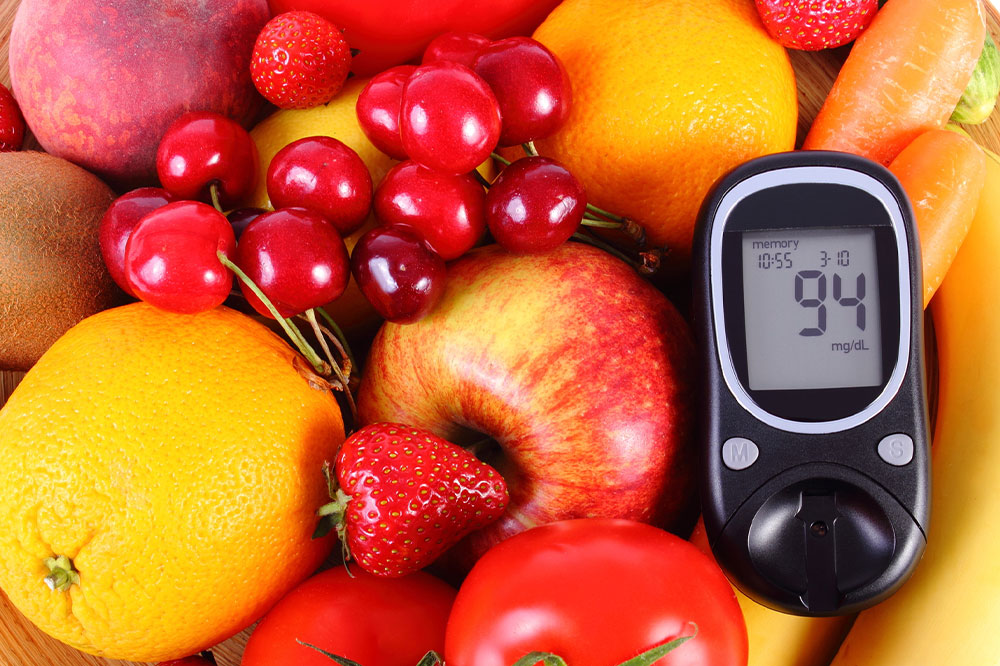
Nutrition for diabetics – Common do’s and don’ts
Physical activity and the right nutrition are critical for a healthy lifestyle, especially among diabetics. In addition to their general health benefits, eating healthy can also keep your blood sugar levels in check. To ensure that your blood sugar levels are in check, you must keep a tab on what you eat and drink. However, your daily meal plan is not a replacement for your diabetes medicine and physical activity. All of these things should occur simultaneously. Broadly, what you eat and how much you eat are vital parameters to ensure that your blood sugar levels are in check.
Bringing about these lifestyle changes might seem challenging initially, but with support from a health care team, your friends, and your family, everything can be made easier. This article will address some foods you must eat and avoid as part of your diabetes diet to keep your blood sugar levels in check.
Foods to eat
Leafy greens
Green leafy vegetables are incredibly healthy and nutritious. They are low in calories and have a low degree of digestible carbs or carbs absorbed by the body. Hence, they won’t lead to a spike your blood sugar levels. In addition, kale, spinach, and other green leafy vegetables are a good source of Vitamin C and other vitamins and minerals. Unfortunately, studies suggest that typically people with diabetes have low Vitamin C in their meals.
Healthier fats
Whether you have diabetes or not, fats are not your enemy. However, you must be able to discern between healthy and unhealthy fats. But since all fats have a high calorific value, you must curtail your consumption. In your daily meals, your fat consumption should not be more than 10 percent. Some healthy fats you can add to your meals are:
- Avocadoes
- Safflower and canola oils
- Olive oil
- Seeds, such as sunflower, pumpkin, and sesame
- Nuts, such as walnuts, peanuts, and almonds
Whole grains
Whole grains have high fiber content. Their nutrient content is also higher compared to white grains. In addition, whole grains and whole wheat have a low glycemic index. Hence, their impact on blood sugar levels will also be less.
Some whole grains you can add to your meals are:
- Brown rice
- Buckwheat
- Whole grain bread
- Quinoa
- Bulgur
- Whole grain pasta
- Rye
- Millet
Fruits
Fruits are an excellent source of fiber, vitamins, and minerals. They also have low sodium and fat content. However, their carb content might be higher than vegetables. Some fruit variations to add to your daily meals are:
- No-sugar-added applesauce
- Fresh fruits
- Canned fruits, without any added sugar
- Plain frozen fruits
- Low-sugar or sugar-free preserves or jam
Foods to avoid
Salty food
Including excess salt in your food puts you at a greater risk of high blood pressure, which, in turn, adds to your risk of stroke and heart diseases. In people with diabetes, the risk of these health conditions is already high. Thus, it is vital to curtail your salt consumption to just a teaspoon or 6 grams in a day. This would imply that you should keep pre-packaged foods out of your daily meals and read through the labels carefully to know the salt content before picking anything. For taste and flavor, you can replace salt with spices and herbs.
Processed and red meat
Red meat and processed meats, such as bacon, ham, lamb, beef, and sausages, are linked with cancers and heart diseases. Heart disease is a common side-effect of diabetes. Hence, it is vital to keep a check on your processed meat consumption.
Saturated fats
People with diabetes must avoid animal proteins, such as butter, hot dogs, and bacon, along with high-fat dairy. It is also advised to curtail your consumption of palm kernel oils and coconut oils.
Foods with high sugar content
Foods with high sugar content, such as energy drinks and sugary drinks, must be avoided. Removing these added sugars from your diet can help keep your blood sugar levels in check and aid in weight maintenance.




